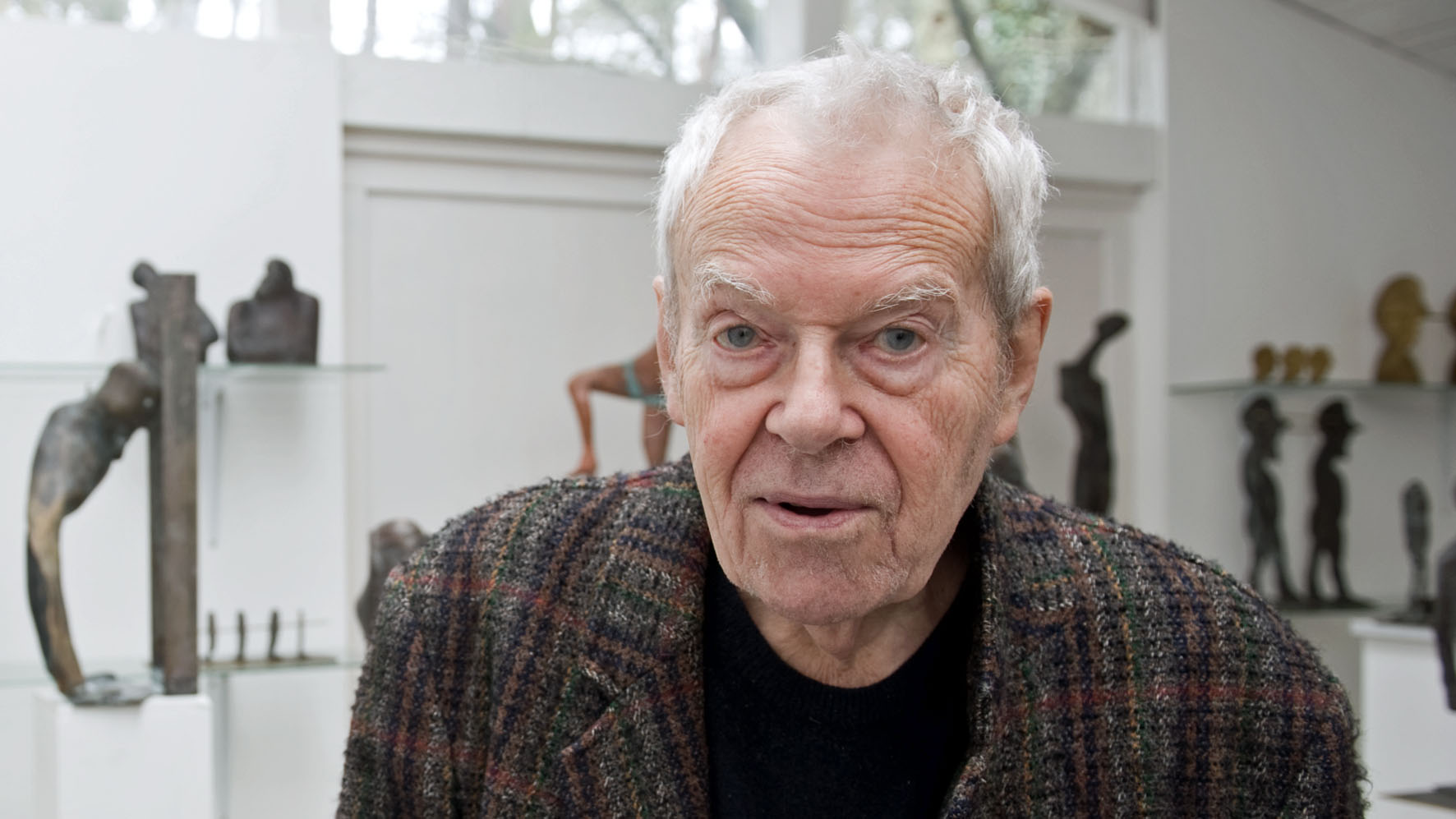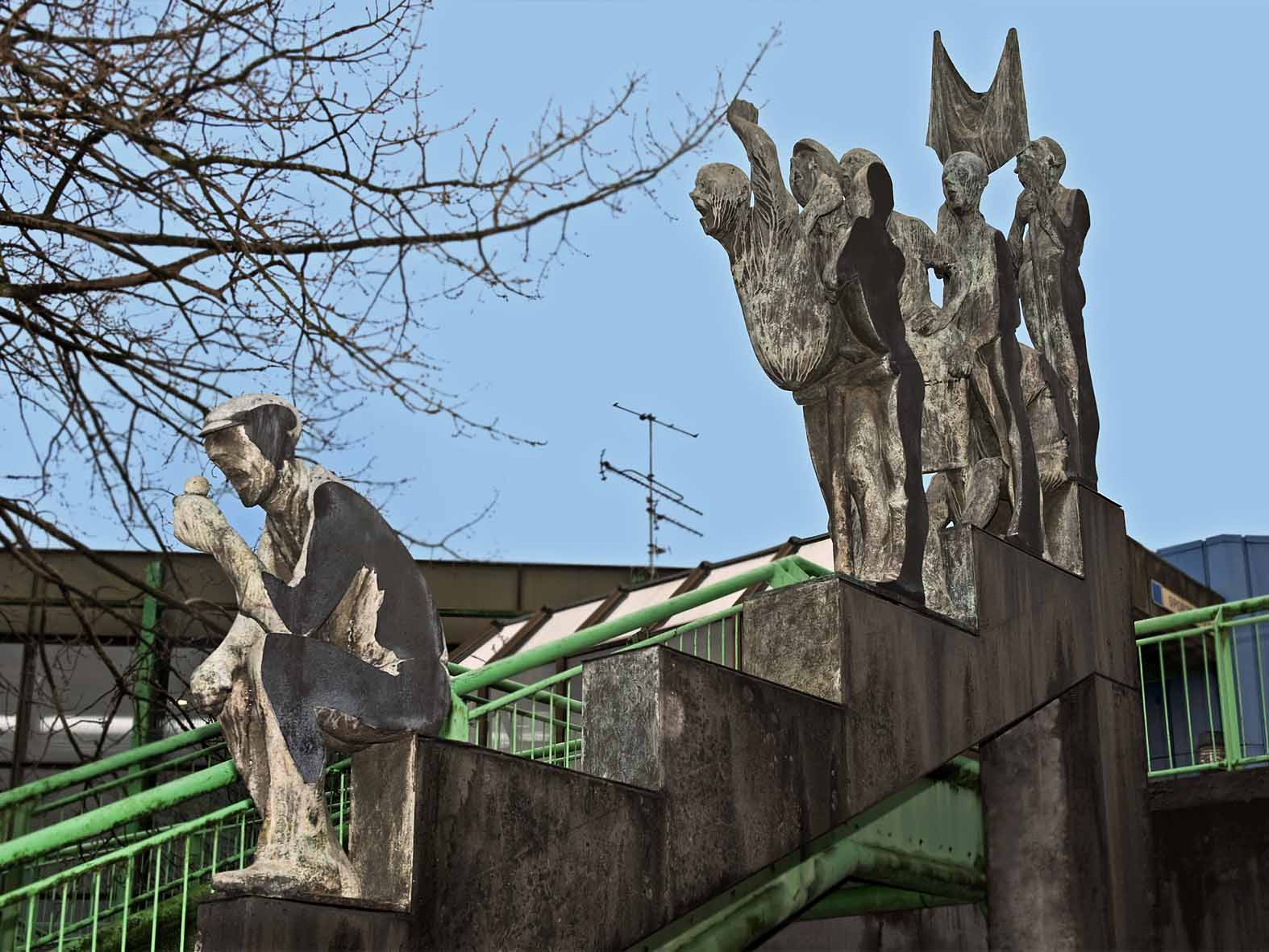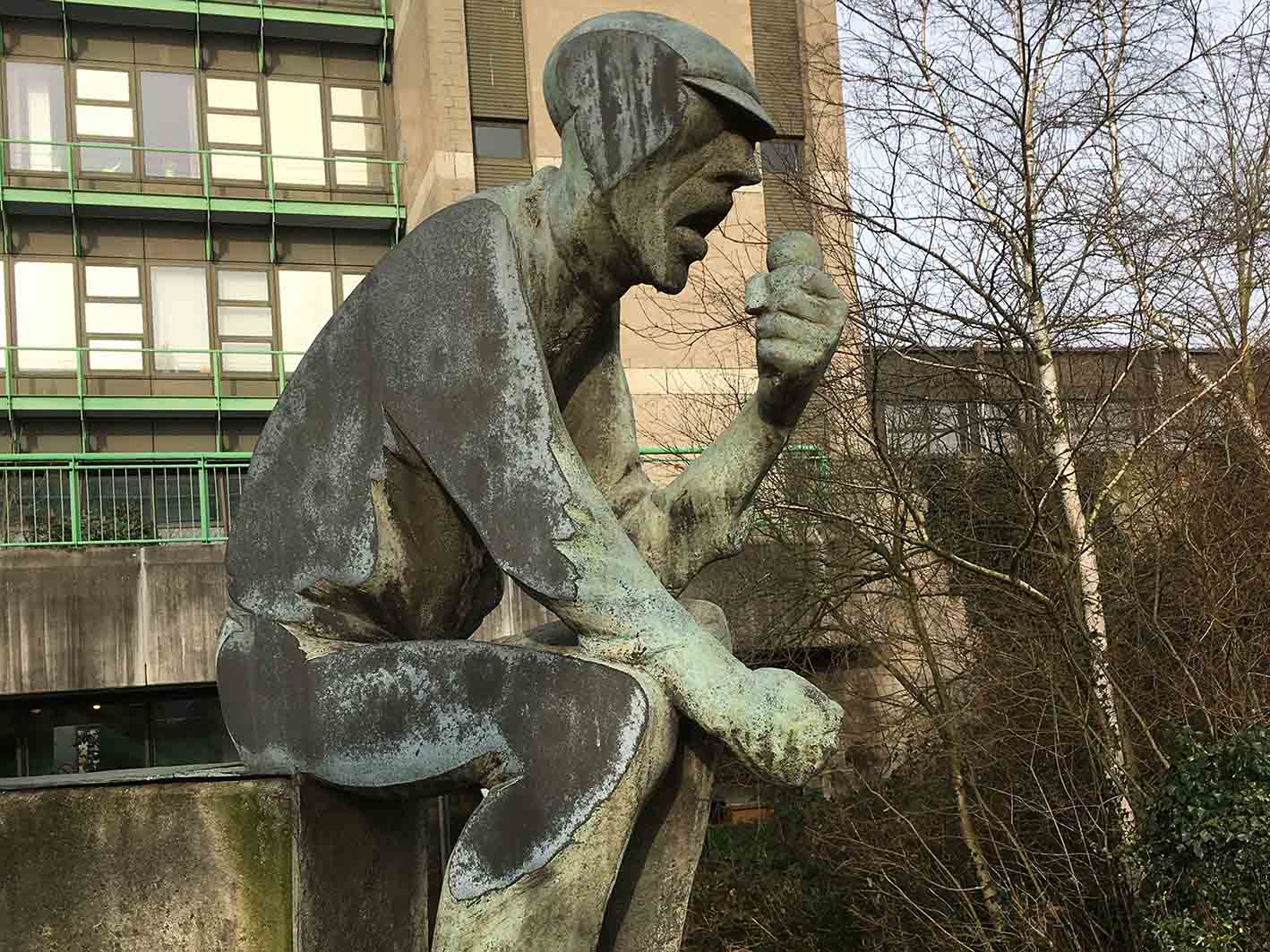
® Harald Rehling / Universität Bremen
“You’d Have to Be Blind Not to See That!”
A bronze sculpture by the famous artist Waldemar Otto is hidden behind the Sport Tower
The sculptor Waldemar Otto was one of the most important German artists. The 91-year-old sadly passed away a few days ago. His 750 sculptures are eye-catchers and treasures all over the world. It is lesser known that alongside the Neptune Fountain in Bremen’s Domshof (cathedral court), one of his pieces of art can be viewed on the university campus. It stands a little hidden and is called “Massensport” – Popular Sport in English.
The reporter mutters into the microphone, the spectators gesticulate excitedly. One of them leans forward waving his fist in the air, while another consoles himself with a sip of beer. And yet another covers his eyes in despair. The figures behind them hold a banner in the air. You can almost hear the tumultuous roar of the crowd.
Dramatic Events Captured in Bronze
This drama has been playing out behind the Sport Tower since 1979, more often than not unnoticed by passersby. It’s well worth a closer look. One of the first things you then notice is how the artist with just nine figures has managed to capture the mood of a whole crowd of excited spectators. It’s rather like regarding a slice cut out of a cake. The flattened sides of the bronze sculpture emphasize that it’s just a small segment of a raging cauldron, the packed terrace of a large stadium. A scene during a Bremen Werder game perhaps? By means of this artistic perspective, the sculptor Waldemar Otto created a fascinating disassociation that makes the observer stop and think.

® Harald Rehling / Universität Bremen
Entryway to the Campus
If you want to find out more, you have to search in the University of Bremen Archive. There you will find a call for tenders from 1974 titled “Art in the Public Space Surrounding the Sport Area at the University of Bremen”. Respondents were invited to submit concepts for art projects that do justice to the “openness of the sports complex” with the busy “entrance area to the indoor swimming pool” and the “North-South diagonal entryway to the university” as “an area with an intrinsically high leisure and communicative value”. It is expressly stated that the area is to be a second entryway into the campus – which today is rather hard to imagine. The requirements are clearly specified: Concepts should not be so much decorative but rather designed to provoke controversy and provide food for thought in keeping with “the university as a place of raising critical awareness”. The jury selected five out of a total of 50 proposals. Then began the grass-roots democratic discourse that was normal for the university in those days – enough to fill four big files!
Criticism of the Commercialization of Sport
Waldemar Otto’s work was well received from the beginning and he won the tender. At that time the sculptor was already a professor at the Hochschule für Gestaltung Bremen (today: University of the Arts Bremen). His group of spectator figures from 1979 was a criticism of how sport had become commercialized. In view of the rapid medial development and character of sports coverage four decades later, Otto’s reporter now appears rather innocuous in the way he casually sits there and speaks into the microphone.

© Harald Rehling / Universität Bremen
Visit to Worpswede
“It’s very clearly a media-critical object,” says Waldemar Otto, who lived and worked in Worpswede when we visited him four years ago to talk about his work on campus. “You’d have to be blind not to see that!” he jokes. His wit and sardonic sense of humor were his trademark. “Artists are able to understand some things better than the rest of the world,” he says with a teasing grin on his face. And he has a surprise in store: he shows me a white polyester duplicate of the stadium spectator group which he still keeps in a corner of his studio in am Weyerberg. Covered with a little moss, it has otherwise stood the test of time. Waldemar Otto may have passed away, but his art lives on. Tip: When the campus is open again, it’s really worthwhile taking a detour to see “Massensport” in bronze.